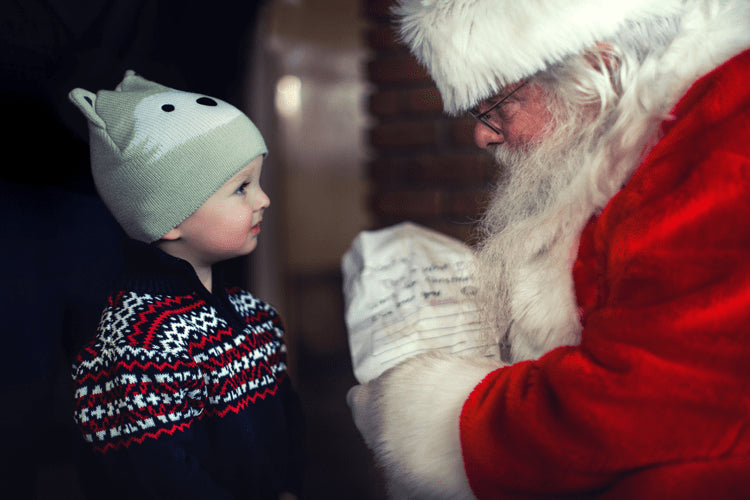Imagine Christmas Eve as a child – what an exciting night it was! Maybe you helped your mom put cookies and milk out near the Christmas tree (and maybe a few carrots for some hungry reindeer), and then got tucked into your bed, all cozy and warm, to read stories like “The Night Before Christmas” and “The Polar Express,” all the while feeling anxious and excited because you knew who would be coming to visit while you were asleep – the jolly Santa Claus!
So many of us wrote letters to Santa hoping he would read them and bring us a new doll or a fire truck or any other toy we desired. Our parents took us to meet him at our local malls, where we took pictures that we cherish and laugh about as we get older. Santa Claus is a pretty big deal, and he’s been very popular for thousands of years!
Good Saint Nick
The character of Santa Claus originated from a 3rd-century monk called Saint Nicholas. Saint Nicholas lived in modern-day Turkey and became well-known for his kindness and generosity – it is believed that he gave away all his inheritance to the poor and needy, and devoted his time to serving those less fortunate. His popularity continued to spread over many years, with stories of his good deeds traveling all over the world.
Santa Claus in the Big Apple
In late 18th century America, many Dutch families living in New York gathered together in December to celebrate the anniversary of Saint Nicholas’s death. The Dutch referred to him as Sint Nikolaas or Sinter Klaas for short. As word of this Saint’s good deeds spread in America, many folks began to participate in the tradition. The Dutch name eventually evolved into the name we know him by today – Santa Claus. This Sinter Klaas was known for putting gifts such as fruit and small toys into stockings hung by a fireplace.
The Sleigh, the Magic, the Man
The tales of Santa Claus we tell today are largely due to a poem written by minister Clement Clarke Moore in 1822, titled “An Account of a Visit from St. Nicholas.” In this poem, Moore describes St. Nicholas as a chubby, old elf with magical abilities who travels in a sleigh led by flying reindeer and give presents to boys and girls everywhere. This poem written by a father to his children is responsible for creating many of the traits we ascribe to Santa Claus today!
As for Santa's famous red, fur-trimmed suit, we have political cartoonist to Thomas Nast to thank for that. In the late 1800s, Nast drew an image of Santa on a copy of Moore's poem. This drawing depicted Santa with a round face and belly and a big white beard, wearing the bold crimson suit that he's still known to wear today. The drawing, along with the poem, was published in Harper's Weekly and quickly became the Santa we all know and love.
Santa’s Significance
As we grow older, the magic of Santa Claus seems to diminish in our minds. We get a little cynical with age, and we start to believe that the Santa story is only for kids. Considering the origins of the big man in the red suit, I think we can all gain something from celebrating the magic and excitement that Santa Claus brings. Saint Nicholas cared for those in need, giving away his own time, energy and money to the poor and desolate. What a deserving man to honor each year, and what a delightful tradition that has emerged in his memory! Santa Claus brings joy to countless children each year and helps us create meaningful memories over our lifetimes.
Does your family have any special traditions or memories relating to Santa Claus? If you have these memories on tape or in photographs, try digitizing them with Legacybox to make them last forever! In the spirit of Saint Nicholas, give your family a gift that will last a lifetime.
With Legacybox, you can send in your old VHS tapes, Super8 films, Polaroid photos and more, and we will digitize them so that you can access them from a USB or in the cloud. Share these precious memories with your family for Christmas this year in an all-new format.















